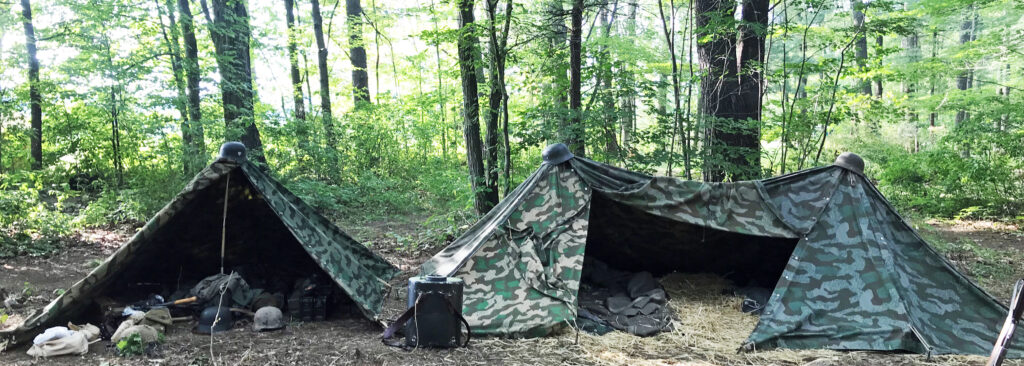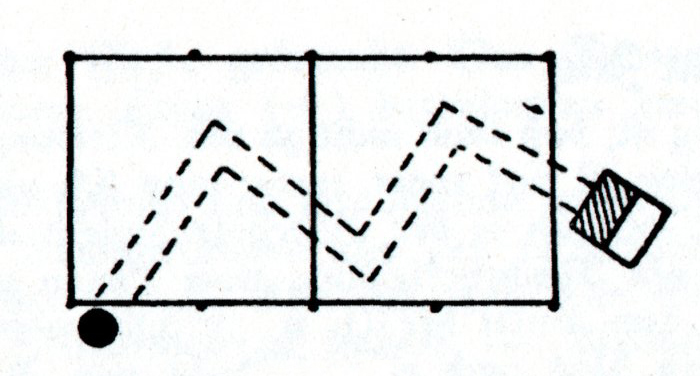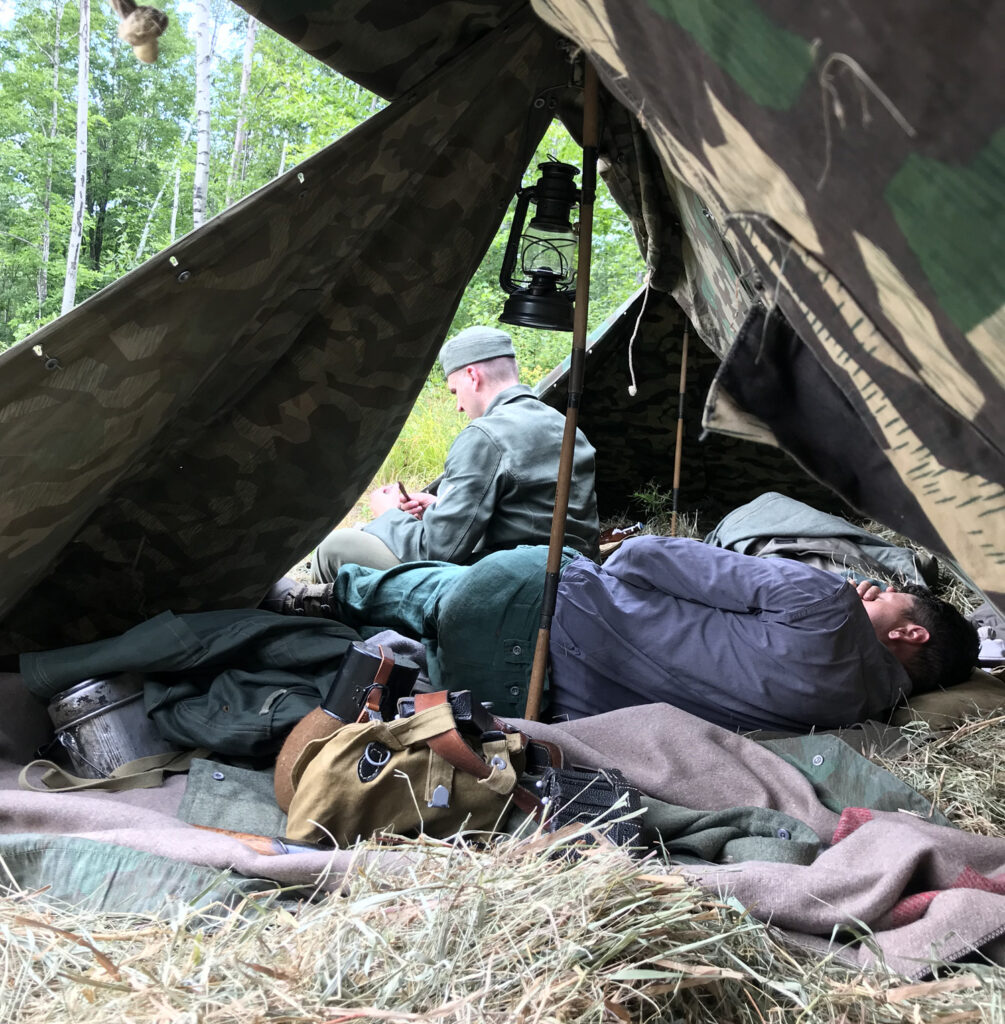
The following is from the booklet “Zeltbau” (Tent Building) by Hans Möser, published in 1933. This instructional booklet with information about constructing and living in tent encampments was intended for use by members of the Hitler Youth and presumably other paramilitary organizations.
Set-Up of Tents
In the tents, absolute order and cleanliness must reign. That is even more crucial in small camps where all equipment items, tools, food supply, etc. must be stored in the sleeping tent. The floor of the tent can be divided using poles and the like… With regard to the interior layout, you can let your imagination wander… With large camps, the set-up of tents is relatively more simple, because dedicated tents or storage rooms for equipment and supplies can be laid out.
On Sleeping in the Tent
A basic requirement is that one does not put on too much clothing while sleeping. Why? – The blood circulation is much more lively, when one is not constricted too much. This is the reason why someone in the camp, lying in his bathing suit with only a light covering, can feel less cold than the person for whom two pairs of pants and three vests still seems insufficient as night clothing. On the other hand, there must also be something underneath you (see “ground layer”) that will provide excellent insulation from the ground depending on the weather and season. And another thing: shoes off, belt undone, suspenders unbuttoned, stocking garters off your legs, sports shorts with elastic off your body, thus stripping away everything attached and constricting. Better to be covered up by your clothes, than to lay there in the straw like a Roulade and then suffer an array of back pains and cramps the next day.
The Sleeping Ground Layer
In dry, warm weather, a dedicated ground layer is not necessary, if the tent will shelter sleepers for only a night. On the other hand, it would be irresponsible for a leader to let his men sleep without a ground layer in a multi-day camp. In bad weather, or even if the ground is damp, you cannot go without a carefully laid out, thick insulating layer. Depending on availability this could be straw, dry leaves, dry pine needles, brush broken into small pieces, etc. Especially in spring and fall, a layer of newspaper aside from the remaining ground cover is very appropriate as a protection against moisture and cold from the ground. In general, newspaper forms a warming ground layer. – If it only rained very little before erecting the tent, and the weather is quite warm, then it is enough to just turn the ground under the tent a shovel deep. Then no further ground layer is needed. At the most you can use newspaper.
Heating the Tent
Heating the tent is essential when the tent camp is set up too early or too late in the season. In very cold weather or frost, the tent must be heated. It is always most beneficial if, from the very outset, the tent is built large enough so that a small fire can be kindled on the ground (12-man tent). It can only be glowing embers and not a brightly blazing fire. For the small tent (gable tent) it is recommended to set up a heating channel (see illustration).

In front of the tent, an earthen hearth is built, the exhaust channel of which runs in a zig-zag under the tent floor. At the other end, a chimney is built as high as possible. The heating channel in the tent is covered with thin stones, sheet metal (cut-up food cans!) and the cracks sealed with clay. Over all of this is placed a thin layer of earth. The fire is maintained by the night watch. You will find that it gets nice and warm in the tent. In some places the heating channel is best tried out first. One can also, for example, scatter the embers of the campfire in the tent and cover them with a thin layer of dirt. The ground is warmed very well. However, this does not sustain warmth in the tent. For that, the use of heated stones is much better. They are removed from the camp fire and rolled into the tent. But the simplest, most comfortable and safest thing is definitely the use of a heating stove…
[For this book’s instructions for making an expedient tent stove, see Tent heating charcoal oven made from a food can]
